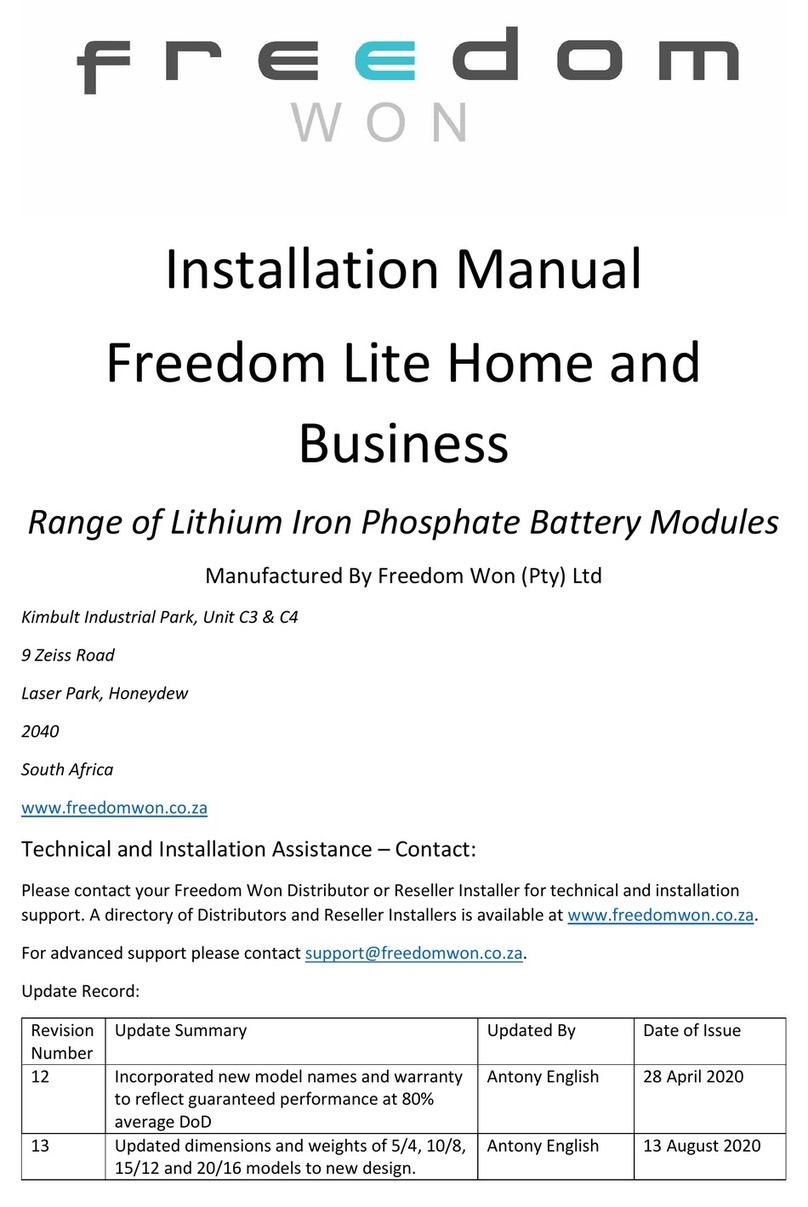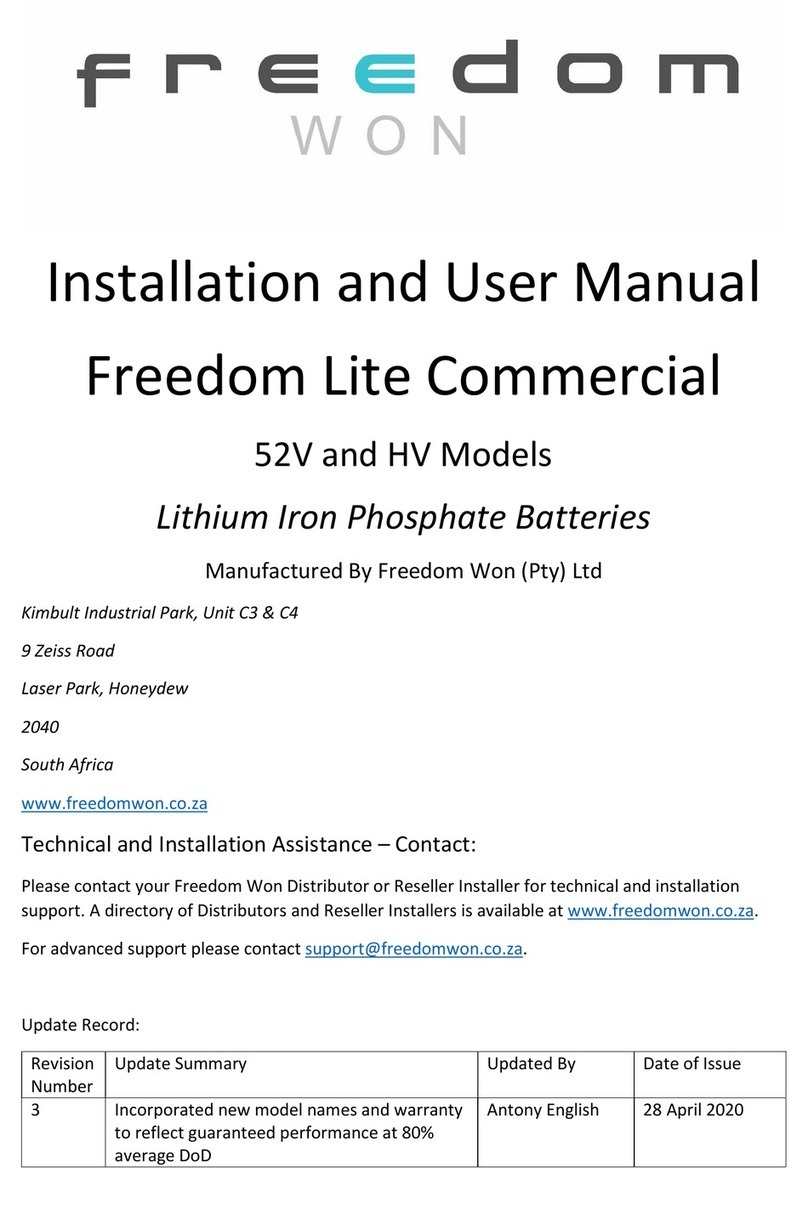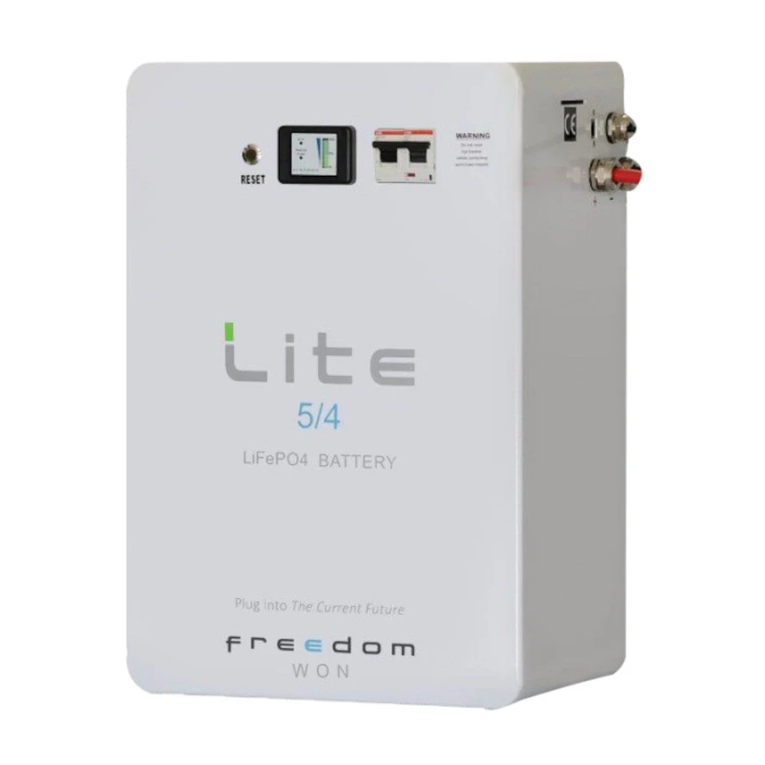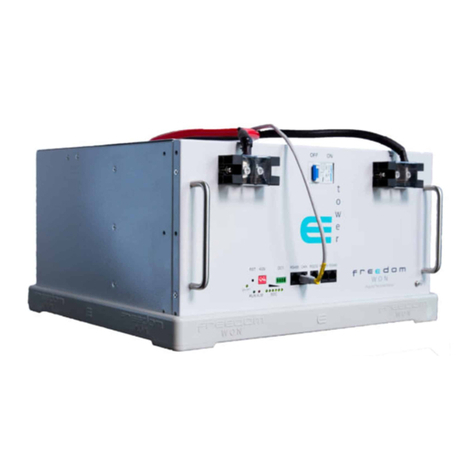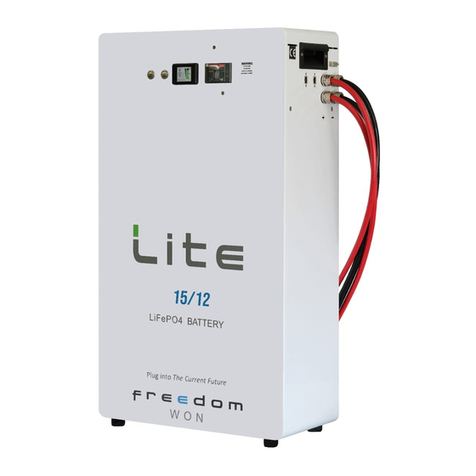Freedom Lite Installation Manual Revision 10
6. CAN Bus Sockets x 2 (RJ45) (one socket must contain a termination resistor if end of
line)
7. DB9 Programming Port (not visible in photo)
8. Reset Button
9. State of Charge Display
10. Error Lite
11. On Button
12. Off Button
13. Safety Retaining Tabs
14. Lifting Eye Bolts
15. Feet
16. Power Level Designator (absent for standard model) – note, the HP models have
become the new standard models as of 1 April 2019 and the HP upgrade is no longer
available
17. WiFi Connect Data Logging and Reporting
18. Override Button
For the 52V models the absolute maximum allowable voltage when fully charged is 56V,
however a more typical inverter setting range is 55.5V to 55.8V, depending on the inverter
voltage tracking accuracy in preventing a voltage overshoot above 56V. The voltage
normally used as the minimum cut off is 48V, however this will not typically be reached if
operating down to 90% Depth of Discharge (DoD). The BMS will command the connected
inverter with CAN Bus interface to stop discharging the battery at 10% SoC (90% DoD),
which roughly equates to 49,0V). Under high load the voltage may drop to 48V whilst still
above 10% SoC. A voltage of 48V or even lower can be observed where the standby current
draw on the inverter has caused the battery to be discharged below 10% SoC or below the
48V minimum cut off voltage. The battery breaker will eventually trip the battery at around
47V to protect the cells from undervoltage.
The Commercial HV models operate at 512V for most models as this is the ideal operating
voltage for the ATESS battery inverters (a common pairing). There are three models with
different voltages because of the differing cell architecture required to build these models –
refer to specification sheet for more details.
The weight of each model is given in the tables 2.1 and 2.2. The Freedom Lite Commercial
100/70, 120/84 and 140/98 are assembled complete in the Freedom Won factory as
standard. The 160/112 up to the largest 700/490 are either assembled on site by a Freedom
Won site team or, if preferred by the client, can be built into a container at Freedom Won
by the Freedom Won factory team.
The 100/70, 120/84 and 140/98 models require specific lifting equipment to place them into
position. Should a specific site present logistical constraints in relation to placing these
models into position, it is possible to request that Freedom Won assemble the batteries on
site at an additional cost.
Page 4 | 28
